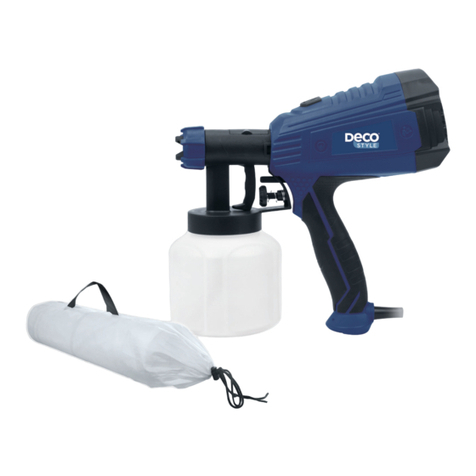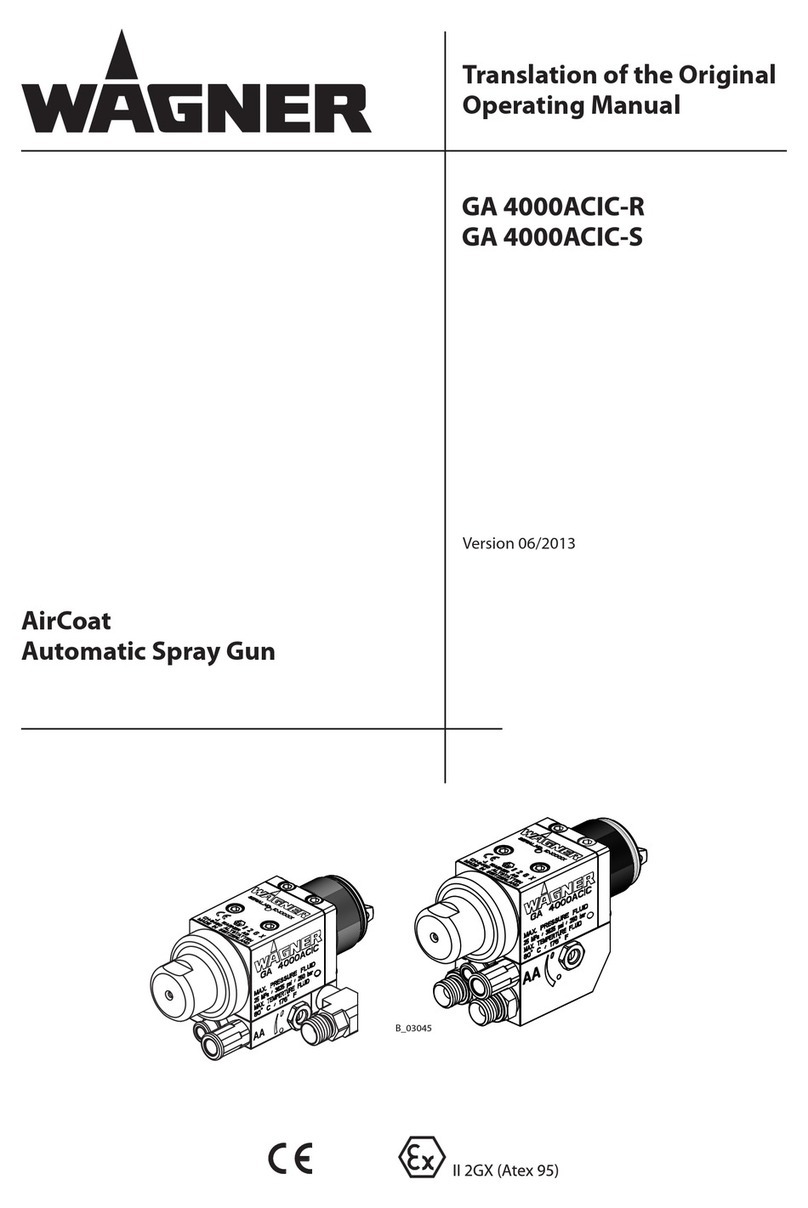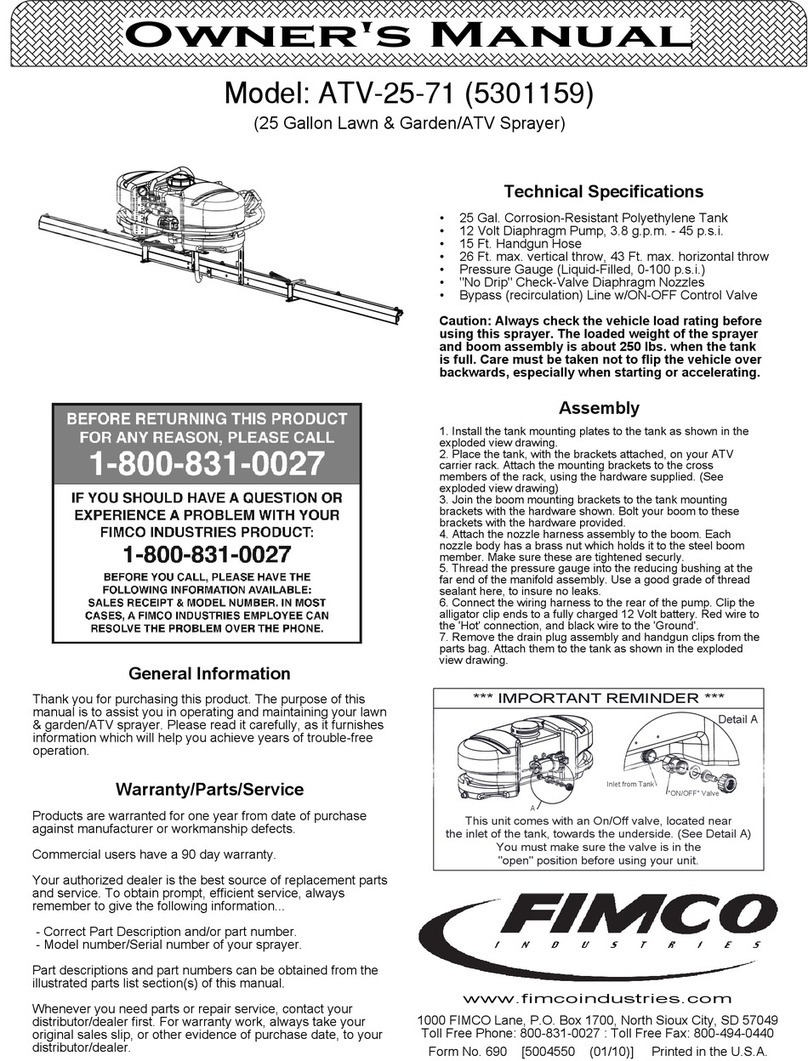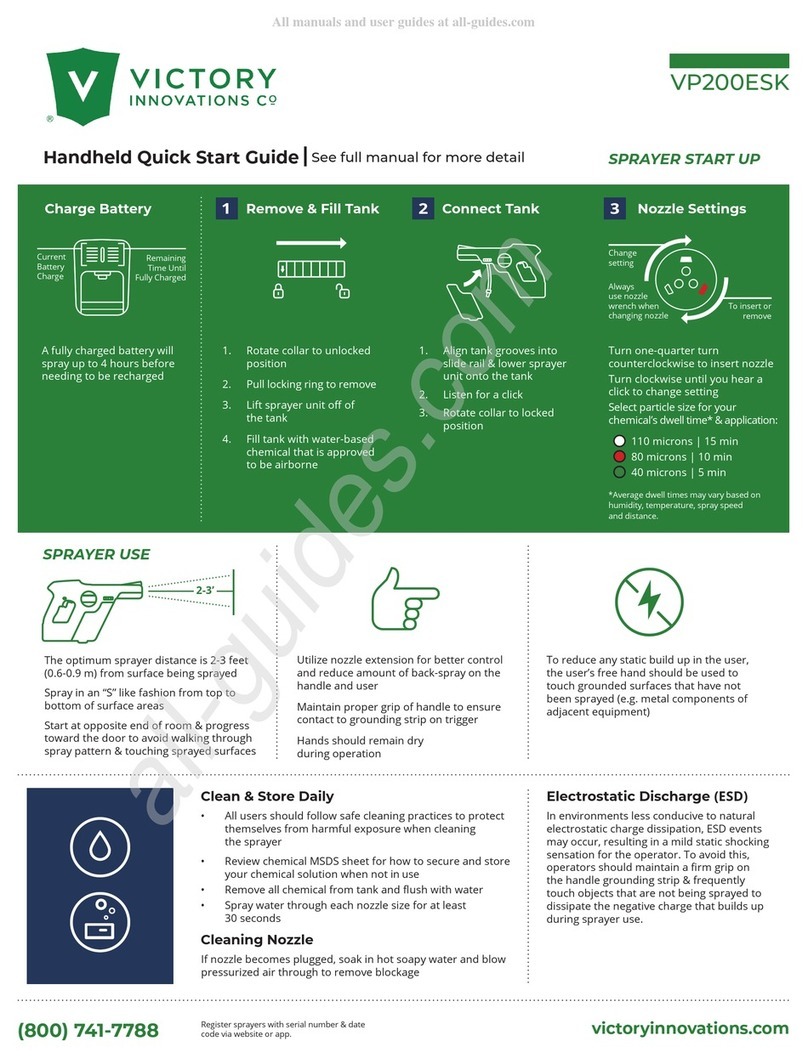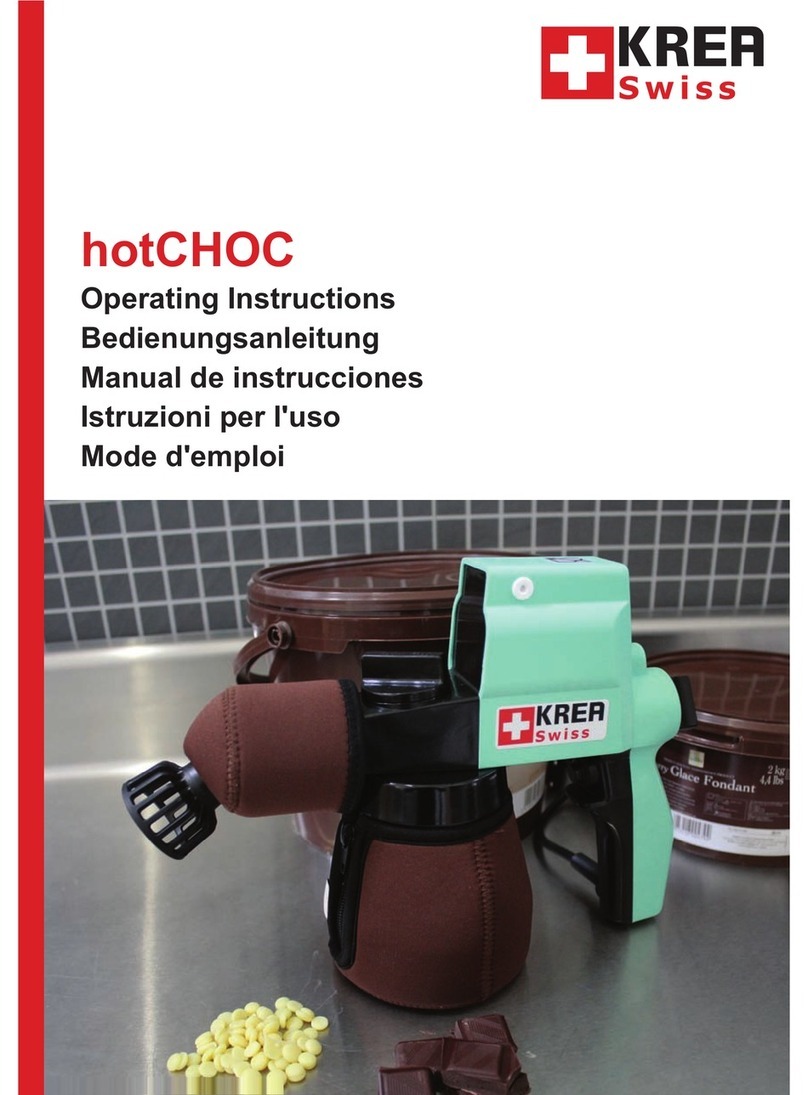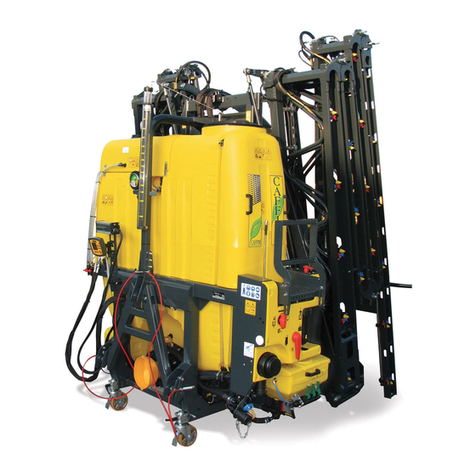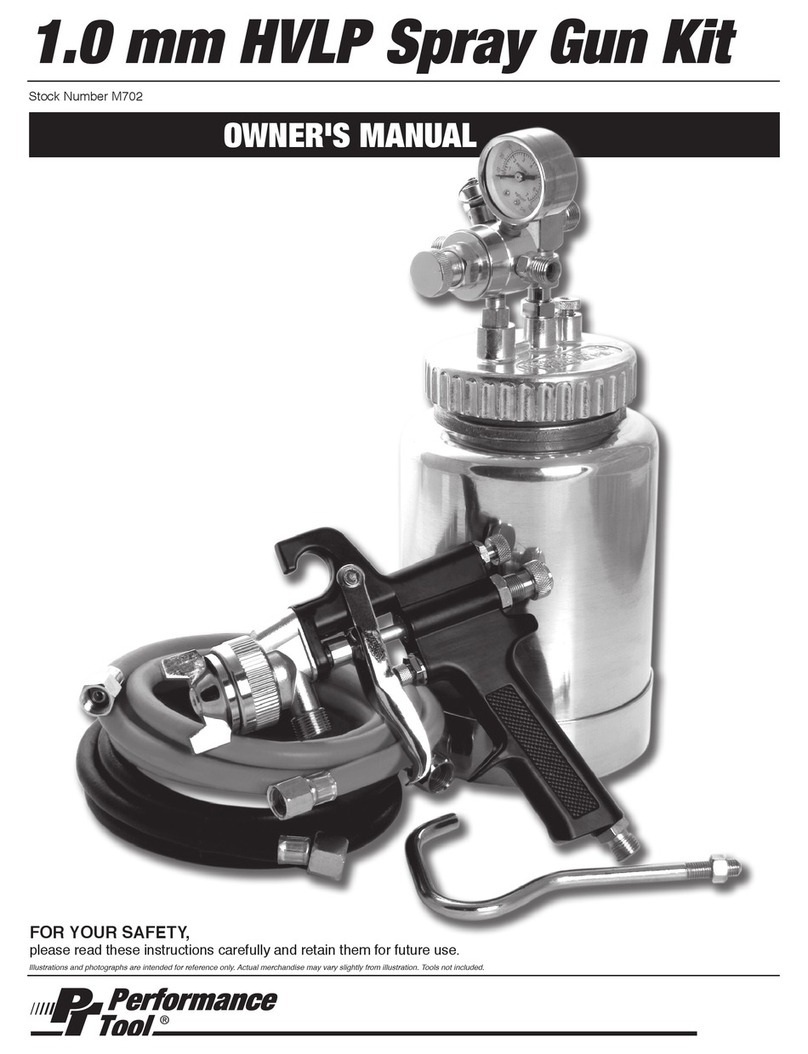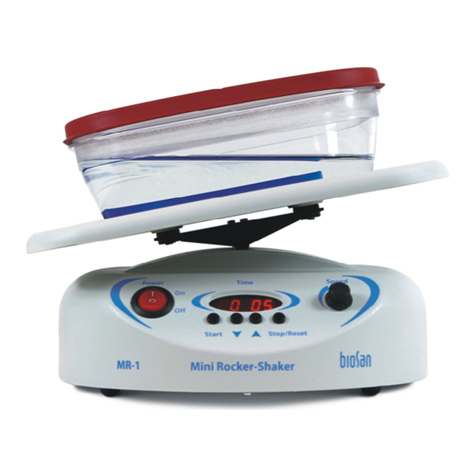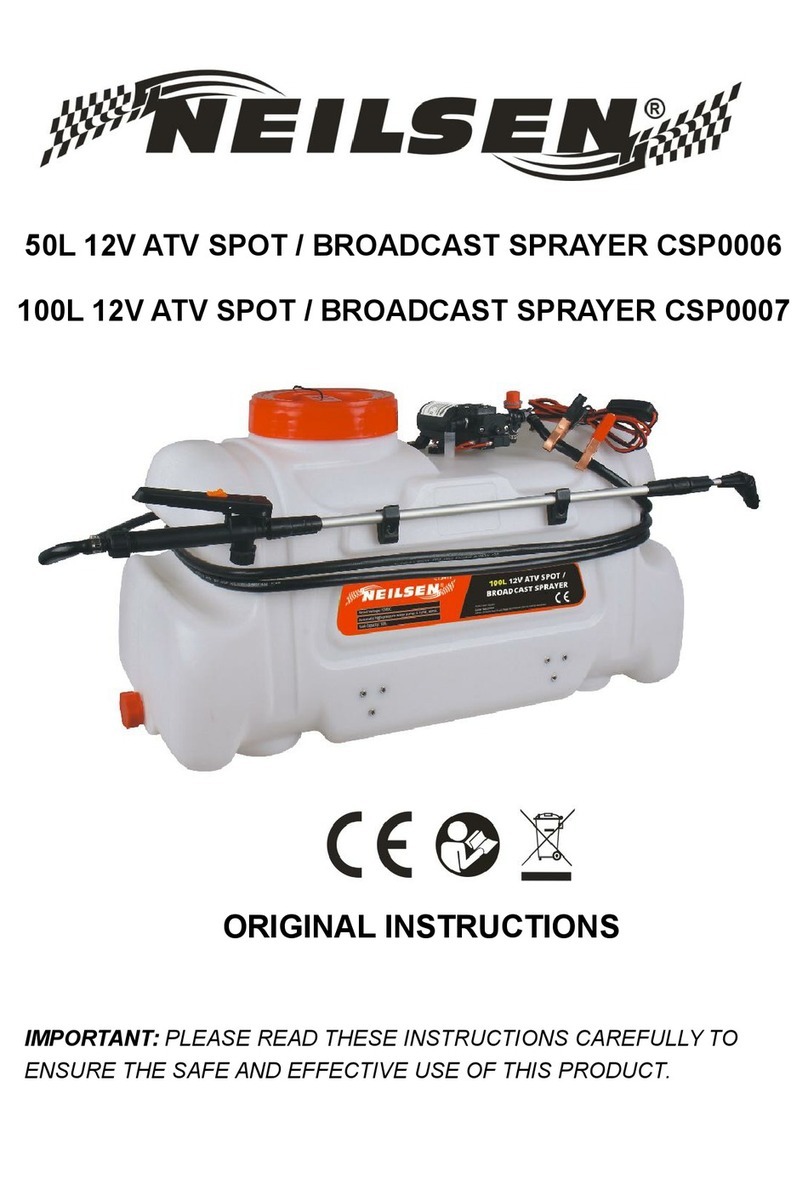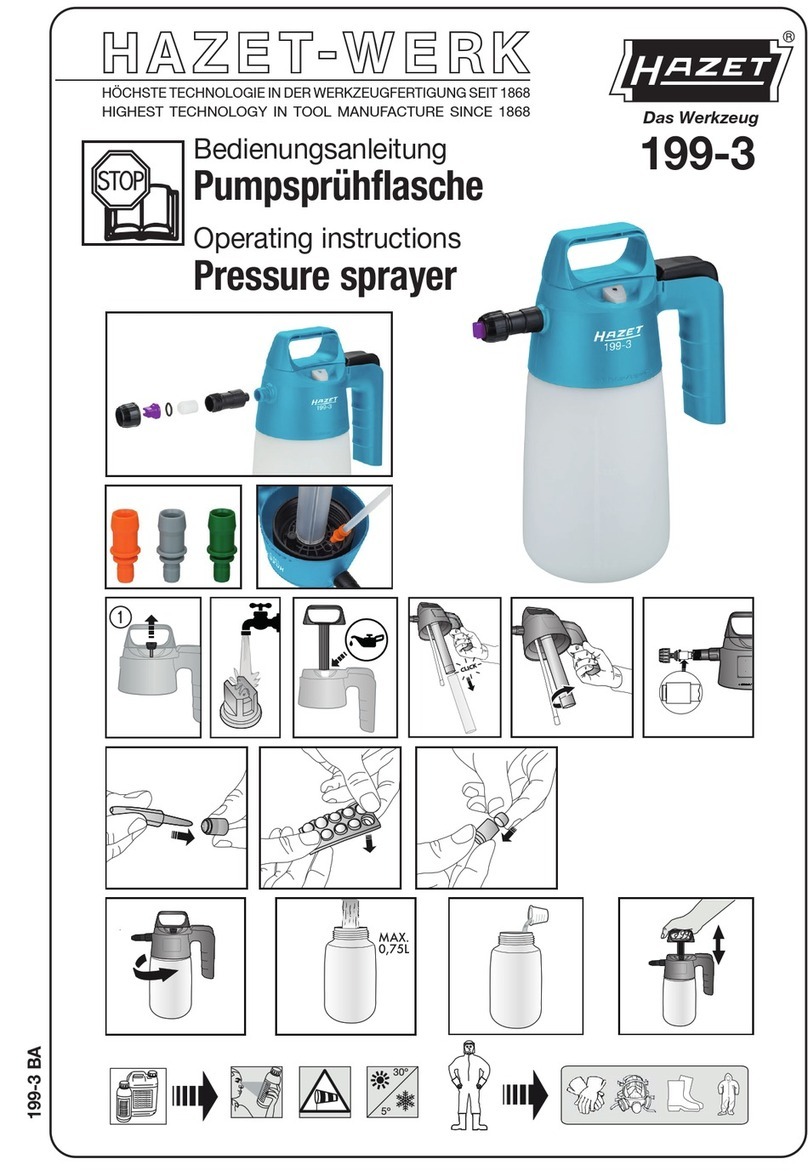Deco Style DS-FSS 500 User manual

User Manual
Original instructions
PAINT SPRAY SYSTEM ELECTRIC
DS-FSS 500
Layout_DS_FSS_500_EX_UK_SPK7.indd 1Layout_DS_FSS_500_EX_UK_SPK7.indd 1 19.11.2020 15:15:1119.11.2020 15:15:11

Contents
Package contents........................................................................ 3
Components .......................................................................................6
General information....................................................................8
Reading and storing the user manual ...........................................8
Explanation of symbols ....................................................................8
Safety..........................................................................................10
Intended use .................................................................................... 10
Residual hazards............................................................................... 11
Safety information............................................................................ 11
Using for the first time ...............................................................18
Checking the fine paint sprayer and items supplied................. 18
Selecting the material and spraying unit.................................... 19
Filling in the material ......................................................................20
Attaching/replacing the spraying unit .........................................21
Fitting/removing the spraying unit to/from the motor unit .....21
Operation................................................................................... 22
Switching the fine paint sprayer On and Off ............................... 22
Adjusting the spray pattern........................................................... 23
Controlling the material volume ...................................................24
Adjusting the spray width..............................................................24
Changing the nozzle set .................................................................25
Instructions for use..........................................................................26
Care and maintenance ............................................................. 28
Cleaning the spraying unit.............................................................28
Cleaning the motor unit..................................................................30
Changing the air filter .....................................................................30
Storage ...................................................................................... 32
Spare parts and accessories ..................................................... 32
Technical data ........................................................................... 33
Noise/vibration information .................................................... 33
Disposal...................................................................................... 36
Disposing of the packaging ...........................................................36
Disposing of the fine paint sprayer...............................................36
Troubleshooting guide ............................................................. 37
Declaration of conformity......................................................... 38
Layout_DS_FSS_500_EX_UK_SPK7.indd 2Layout_DS_FSS_500_EX_UK_SPK7.indd 2 19.11.2020 15:15:1919.11.2020 15:15:19

3
12
3
4
5
6
7
8
9
10
11
8
7
6
10
12
5
13
14
15 16 17 18
A
Package contents
Package contents
Package contents
Layout_DS_FSS_500_EX_UK_SPK7.indd 3Layout_DS_FSS_500_EX_UK_SPK7.indd 3 19.11.2020 15:15:2019.11.2020 15:15:20

4
Package contents
4
2221201912
2322212019
23 11
9
E
18
15
B
7
5
C D
E
Layout_DS_FSS_500_EX_UK_SPK7.indd 4Layout_DS_FSS_500_EX_UK_SPK7.indd 4 19.11.2020 15:15:2019.11.2020 15:15:20

5
Package contents
8
24
25
26
27
10
24
25
9/11
13 23
F
H I
K
28 292
L
AB C
G
Layout_DS_FSS_500_EX_UK_SPK7.indd 5Layout_DS_FSS_500_EX_UK_SPK7.indd 5 19.11.2020 15:15:2319.11.2020 15:15:23

6
Package contents
Components
1Suspension fixture
2Motor unit
3Connection cable
4Union nut (spraying unit for indoor wall paints)
5Lever for setting the spray width (1x per spraying unit)
6Trigger (1x per spraying unit)
7Setting screw for controlling the material quantity (1x per spraying unit)
8Paint tub (1x per spraying unit)
9Spraying unit for indoor wall paints
10 Lid (1x per paint tub)
11 Spraying unit for enamels and varnishes
12 Union nut with adjusting ring (spraying unit for enamels and varnishes)
13 Nozzle set 3.5 mm (needle and nozzle)
14 Needle removal tool
15 Container for checking the viscosity
16 Cleaning needle
17 Cleaning brush
18 Safety catch
19 Air cap (1x per spraying unit)
20 Nozzle (1x per spraying unit)
21 Nozzle seal (1x per nozzle)
22 Twist cap (1x per spraying unit)
23 Needle (1x per spraying unit)
24 Venting tube (in several pieces)
25 Intake tube
Layout_DS_FSS_500_EX_UK_SPK7.indd 6Layout_DS_FSS_500_EX_UK_SPK7.indd 6 19.11.2020 15:15:2819.11.2020 15:15:28

7
Package contents
26 Lid seal (1x per lid)
27 Tub seal (1x per paint tub)
28 Air filter (motor unit)
29 Filter cover (motor unit)
Layout_DS_FSS_500_EX_UK_SPK7.indd 7Layout_DS_FSS_500_EX_UK_SPK7.indd 7 19.11.2020 15:15:2819.11.2020 15:15:28

8
General information
General information
Reading and storing the user manual
These operating instructions are a part of this fine paint
sprayer. They contain information of importance for your
safety, for the use of the product and for its care.
Read through the operating instructions carefully before you start
using the fine paint sprayer. Take special care to observe the safety
information and warnings. Failure to follow the information in these
operating instructions could lead to serious injuries or to damage to
the fine paint sprayer. Observe all applicable local and national reg-
ulations relating to the use of this product. Keep these operating in-
structions in a safe place for later reference. If you give the fine paint
sprayer to any other person to use, it is essential that you pass on
these operating instructions as well.
Explanation of symbols
The following symbols and signal words are used in these operating
instructions, on the fine paint sprayer or on the packaging.
This indicates a dangerous situation which,
if not avoided, could result in death or
seriousinjuries.
This indicates a dangerous situation which,
if not avoided, could result in minor or moderate injuries.
Warns of possible damage to property.
Layout_DS_FSS_500_EX_UK_SPK7.indd 8Layout_DS_FSS_500_EX_UK_SPK7.indd 8 19.11.2020 15:15:2819.11.2020 15:15:28

9
General information
This symbol draws attention to additional information
about assembly or use.
Declaration of conformity (see the section “Declaration of
conformity”): Products bearing this symbol comply with all
applicable Community legislation of the European
Economic Area.
Read the operating instructions.
This equipment complies with protection class II.
Layout_DS_FSS_500_EX_UK_SPK7.indd 9Layout_DS_FSS_500_EX_UK_SPK7.indd 9 19.11.2020 15:15:2819.11.2020 15:15:28

10
Safety
Safety
Intended use
This fine paint sprayer is designed solely for private users in the hob-
by and DIY sectors. The fine paint sprayer is suitable for spraying:
• solvent-based and water-soluble indoor wall paints,
• lacquers,
• glazes,
• wood preservatives,
• stains or similar materials.
All other uses are expressly prohibited and are considered to be cas-
es of misuse.
The manufacturer or dealer accepts no liability for injuries, losses or
damages which result from improper or incorrect use. Examples of
improper or incorrect use include:
• use of the fine paint sprayer for purposes other than those for
which it is intended;
• failure to observe the safety information, warnings, assembly in-
structions, operating instructions, maintenance instructions and
cleaning instructions presented in this manual;
• failure to observe any accident prevention regulations, occupa-
tional health regulations or safety regulations which apply specif-
ically and/or generally to the use of the fine paint sprayer;
• use of accessories and spare parts which are not intended for the
fine paint sprayer;
• modifications to the fine paint sprayer;
• repairs to the fine paint sprayer carried out by someone other
than the manufacturer or an expert;
• use of the fine paint sprayer in the crafts sector, commerce or
industry;
Layout_DS_FSS_500_EX_UK_SPK7.indd 10Layout_DS_FSS_500_EX_UK_SPK7.indd 10 19.11.2020 15:15:2819.11.2020 15:15:28

11
Safety
• operation or maintenance of the fine paint sprayer by persons
who do not understand the related hazards and/or are not famil-
iar with handling the fine paint sprayer.
Residual hazards
Even when the fine paint sprayer is used as intended, it is impossi-
ble to completely rule out non-obvious residual risks. The following
hazards may arise in connection with the nature of the fine paint
sprayer:
• damage to the lungs if no suitable protective dust mask is used;
• damage to hearing if no suitable ear protection is used;
• damage to health caused by hand-arm vibrations if the fine paint
sprayer is used over a long period of time or is not properly guid-
ed and maintained;
• skin irritations/allergies if no suitable protective clothing is used.
Safety information
Read all the safety information and instructions. Failure to adhere
to the safety information and instructions set out below may result in
electric shock, fire and/or serious injury.
The term “power tool” used in the safety information and instructions
refers to power tools operated from the mains power supply (with a
power cable) and to battery operated power tools (without a power
cable).
Layout_DS_FSS_500_EX_UK_SPK7.indd 11Layout_DS_FSS_500_EX_UK_SPK7.indd 11 19.11.2020 15:15:2819.11.2020 15:15:28

12
Safety
1. Workplace safety
a) Keep your work area clean and well lit. Untidy or unlit work
areas can result in accidents.
b) Do not use this power tool in an area where there is a risk of
explosion and where there are inflammable liquids, gases or
dust. Power tools generate sparks that can ignite dust or vapors.
c) Keep children and other people away from the power tool
while you are using it. If you are distracted you may lose con-
trol of the power tool.
2. Electrical safety
a) The plug on the power tool must fit into the socket. The sock-
et must not be modified in any way. Do not use adapter plugs
together with power tools with a protective earth. Unmodified
plugs and matching sockets will reduce the risk of an electric
shock.
b) Avoid body contact with earthed surfaces such as pipes, hea-
ting systems, stoves and refrigerators. There is an increased
risk of suffering an electric shock if your body is earthed.
c) Keep the power tool out of the rain and away from moisture.
The ingress of water into an electric power tool increases the risk
of an electric shock.
d) Do not use the power cable for a purpose for which it is not
designed, for example to carry the power tool, hang it up or
to pull the plug out of the socket. Keep the power cable away
from heat, oil, sharp edges and moving parts. Power cables that
are damaged or tangled increase the risk of an electric shock.
e) If you use an electric power tool outdoors, use only extension
cables that are suitable for outdoor use. The use of an exten-
sion cable which is suitable for outdoor use reduces the risk of an
electric shock.
f) If you cannot avoid using the power tool in a damp location,
Layout_DS_FSS_500_EX_UK_SPK7.indd 12Layout_DS_FSS_500_EX_UK_SPK7.indd 12 19.11.2020 15:15:2819.11.2020 15:15:28

13
Safety
use a residual current device (RCD) circuit breaker. The use of
a residual current device (RCD) circuit breaker will reduce the risk
of suffering an electric shock.
3. Safety of persons
a) Be careful, watch what you are doing and be sensible and
responsible when using an electric power tool. Never use the
power tool if you are tired or under the influence of drugs, alcohol
or medication. One moment of inattention when using the elec-
tric tool can result in serious injuries.
b) Wear personal safety equipment and always wear safe-
ty goggles. Wearing personal safety equipment such as dust
masks, non-slip safety shoes, a helmet or ear muffs, depending
on the type and application of the tool, reduces the risk of injury.
c) Make sure that the tool cannot start up accidentally. Ensure
that the power tool is switched off before you connect it to the
power supply and/or connect the battery pack, pick it up or carry
it. If you have your finger on the switch while carrying the power
tool or if you connect the power tool to the power supply while it
is switched on, this may cause accidents.
d) Remove all adjusting tools or wrenches before you switch on
the power tool. Any tool or wrench in a rotating part of the pow-
er tool could cause injuries.
e) Avoid abnormal working postures. Make sure you stand
squarely and keep your balance at all times. This will enable you
to control the power tool better in unexpected situations.
f) Wear suitable clothes. Never wear loose fitting clothes or jewel-
lery. Keep hair and clothing away from moving parts. Loose cloth-
ing, jewellery or long hair can be caught by moving parts.
g) If dust extraction devices and dust collection devices can be
fitted, they must be connected and must be used correctly.
The use of a dust extractor can reduce the dangers posed by
dust.
Layout_DS_FSS_500_EX_UK_SPK7.indd 13Layout_DS_FSS_500_EX_UK_SPK7.indd 13 19.11.2020 15:15:2819.11.2020 15:15:28

14
Safety
h) Do not allow yourself to be lulled into a false sense of securi-
ty and do not ignore the safety regulations covering electric
power tools, even if you are familiar with the power tool af-
ter having used it many times. Carelessness can lead to serious
injuries in just a fraction of a second.
4. Using and handling the power tool
a) Do not overload your power tool. Use the correct electric tool
for the job in hand. The correct tool will enable you to work better
and more safely within the specific performance range.
b) Do not use an electric power tool if the switch is defective. An
electric power tool that cannot be switched on or off is dangerous
and must be repaired.
c) Pull the plug out of the socket and/or remove the remo-
vable battery pack before making any adjustments to the
tool, changing plug-in tool parts or putting the power tool
down. These precautions will prevent the power tool starting
accidentally.
d) Keep unused electric tools out of the reach of children. Do
not allow people who are not familiar with the power tool or who
have not read these instructions to use the power tool. Electric
tools are dangerous if they are used by inexperienced people.
e) Look after power tools and plug-in tools with care. Check that
moving parts function correctly and do not jam, and whether any
parts are broken or damaged such that they adversely affect the
function of the power tool. Have damaged parts repaired before
you use the power tool. Many accidents are caused by poorly
maintained electric tools.
f) Keep cutting tools sharp and clean. Carefully maintained cut-
ting tools with sharp cutting edges will jam less and are easier to
control.
g) Use the power tool, plug-in tools, etc. as set out in these
instructions. Take account of the conditions in your work area
Layout_DS_FSS_500_EX_UK_SPK7.indd 14Layout_DS_FSS_500_EX_UK_SPK7.indd 14 19.11.2020 15:15:2819.11.2020 15:15:28

15
Safety
and the job in hand. Using electric tools for purposes other than
the one for which they are designed can result in dangerous
situations.
h) Keep the handles and grip surfaces dry, clean and free from
oil and grease. If the handles and grip surfaces are slippery, it
will not be possible to operate and control the power tool safely in
unforeseen situations.
5. Service
a) Have your power tool repaired only by trained personnel
using only genuine spare parts. This will ensure that your pow-
er tool remains safe to use.
Special safety information for spray guns
− Do not use the spray gun to spray combustible materials.
− Watch out for the hazards that might arise from the sprayed mate-
rial and pay attention also to the information printed on the con-
tainers or issued by the manufacturer of the material.
− Do not spray any materials if you do not know how hazardous
they are.
− Wear suitable safety equipment, e.g. a protective dust mask.
− Do not clean the spray gun with combustible solvents.
Supplementary safety information
− Paint mist and solvent vapors are harmful to your health. Work
only in well ventilated rooms or with artificial ventilation. Wear
work clothing, safety goggles, ear protection and gloves.
− Never direct the spray at persons or animals – risk of injury.
− Never operate the fine paint sprayer with a damaged or missing
nozzle seal. If a nozzle seal is missing or damaged, liquid could get
into the tool and increase the risk of an electric shock. Check the
nozzle seal each time before use.
Layout_DS_FSS_500_EX_UK_SPK7.indd 15Layout_DS_FSS_500_EX_UK_SPK7.indd 15 19.11.2020 15:15:2819.11.2020 15:15:28

16
Safety
− Be sure to cover over power sockets and switches with adhesive
tape. There will be a risk of an electric shock if spray material gets
inside.
− Do not use the fine paint sprayer in premises where the explosion
protection directive applies.
− Provide good natural or artificial ventilation in order to prevent
the risk of an explosion while spraying.
− When you are spraying, keep away from sources of ignition such
as open flames, lit cigarettes, sparks, hot glowing wires and hot
surfaces.
− Make sure that no solvent vapors are sucked in by the fine paint
sprayer.
− The fine paint sprayer is not a toy. Do not allow children to handle
or play with the fine paint sprayer.
− Keep the packaging material, particularly sheets and bags made
of plastic film, away from children. There is a risk of suffocation.
− Connect the fine paint sprayer only to a properly installed socket
with an earthing contact.
− Connect the fine paint sprayer to the power supply only when the
supply voltage at the power socket complies with the specifica-
tions on the rating plate.
− Connect the fine paint sprayer only to a readily accessible power
socket so that you can disconnect it readily from the power supply
in the event of a fault.
− Never hold the fine point sprayer or its power plug with damp
hands.
− Position the power cable so that it does not become a tripping
hazard.
− Do not kink the power cable and do not place it over sharp edges.
− Always pull the power plug out of the power socket before doing
any work on the fine paint sprayer.
Layout_DS_FSS_500_EX_UK_SPK7.indd 16Layout_DS_FSS_500_EX_UK_SPK7.indd 16 19.11.2020 15:15:2819.11.2020 15:15:28

17
Safety
− All surfaces and objects that you do not want to spray with the
spray material must be covered or removed from the work area.
When working with the fine paint sprayer remember that, for ex-
ample, wind can spread the paint mist over large distances and
cause damage.
− Use the spray attachment only with a valve that is in good work-
ing order.
− Stop using the fine paint sprayer if paint rises into the ventilation
tube. Dismantle the ventilation tube, valve and membrane, clean
them and replace the membrane if necessary.
− If the power cable of the fine paint sprayer becomes damaged,
it must be replaced by the manufacturer, by one of its customer
service centers or by a similarly trained person in order to prevent
hazards.
Keep this safety information in a safe place!
Layout_DS_FSS_500_EX_UK_SPK7.indd 17Layout_DS_FSS_500_EX_UK_SPK7.indd 17 19.11.2020 15:15:2819.11.2020 15:15:28

18
Using for the first time
Using for the first time
Checking the fine paint sprayer and items supplied
Risk of damage!
If you open the packaging without care using a sharp knife or other
pointed objects, this could quickly cause damage to the fine paint
sprayer.
• Open the packaging and take out the equipment with care.
• Remove the packaging material and any packaging and/or trans-
portation braces (if present).
• Check to see if all the items are present.
• Inspect the equipment and accessories for transport damage.
• If possible, keep the packaging until the end of the guarantee
period.
• After unpacking the equipment check that it is complete and – to
prevent hazards – that it has not been damaged in transit. If you
have any doubts, do not use the equipment but contact our cus-
tomer service center instead. You will find the service address in
our warranty terms on the warranty card.
Layout_DS_FSS_500_EX_UK_SPK7.indd 18Layout_DS_FSS_500_EX_UK_SPK7.indd 18 19.11.2020 15:15:2919.11.2020 15:15:29

19
Using for the first time
Selecting the material and spraying unit
Risk of damage!
Non-approved materials could damage the fine paint sprayer.
− Note the list of materials that are approved for use and those that
are not approved for use.
Approved materials Non-approved materials
- Indoor wall paint (emulsions etc.)
- Solvent-based and water-soluble
lacquers
- Glazes and primers
- 2-component paints, clear
lacquers
- Vehicle topcoats
- Wood preservatives and stains
- Alkaline solutions, acidic coat-
ing materials
- Combustible coating materials
Risk of damage!
Improper handling of the fine paint sprayer could result in damage.
− Note the information provided by the manufacturers of sprayable
thinners and dilute the paint accordingly if required.
− You can also carry out a spraying test to determine the optimum
degree of thinning.
− If you are unable to find any information from the manufacturers,
use the guide values listed in the table.
− If the delivery rate is too low, add the thinner in steps of 5–10 %
until the delivery rate meets your requirements. Note the maxi-
mum permissible degree of thinning quoted by the manufactur-
er.
Layout_DS_FSS_500_EX_UK_SPK7.indd 19Layout_DS_FSS_500_EX_UK_SPK7.indd 19 19.11.2020 15:15:2919.11.2020 15:15:29

20
Using for the first time
− Stir the material thoroughly and thin it in the paint tub in accord-
ance with the thinning recommendation.
Spray material Thinning
recommendation
Nozzle
diameter
Glazes, wood preservatives, stains, oils,
disinfectants
Unthinned
(max. 40 DIN-sec)
1.0 mm
Solvent-based or water-soluble lac-
quers, primers, vehicle topcoats, 2-com-
ponent paints, clear lacquers
Thin by 0-10 %
(max. 40 DIN-sec)
1.0 mm
Indoor wall paint Thin by approx.
5-10%
(max. 100 DIN-sec)
2.5 mm
All other viscous materials Max. 150 DIN-sec 3.5 mm
1. Use the container ( 15 ) for the viscosity test in order to check
whether your paint has the required viscosity (see Fig. C). Fill the
container for the viscosity test with the required spray material
until completely full.
2. Let the spray material in the container run out through the open-
ing in the bottom and note the time it takes for all the spray ma-
terial to emerge. The time recorded is the basis for calculating the
viscosity of the spray material in the unit DIN-sec.
3. If you are unsure about which material to use for your project, ask
your paint dealer or a similar specialist.
Filling in the material
1. Remove the spraying unit ( 9) ⁄ ( 11 ) from the motor unit
( 2) as described in the section “Attaching/replacing the spray-
ing unit”.
2. Open the paint tub ( 8) by unscrewing the lid ( 10 ) coun-
ter-clockwise (see Fig. A).
Layout_DS_FSS_500_EX_UK_SPK7.indd 20Layout_DS_FSS_500_EX_UK_SPK7.indd 20 19.11.2020 15:15:2919.11.2020 15:15:29
Table of contents
Other Deco Style Paint Sprayer manuals
